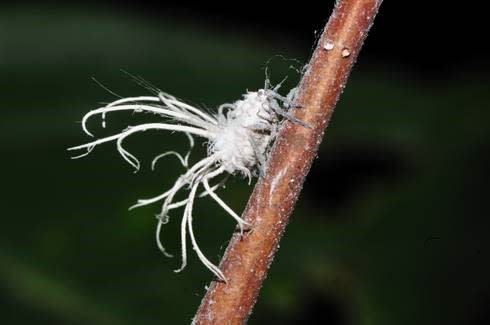 Listen to this article
•
15:34 min
Listen to this article
•
15:34 min
In the early 2000s, I was based in the city of Pune, toiling away at my corporate job. Every opportunity I got, on weekends and holidays, I spent in the wilds of the Western Ghats. Blessed with a family that loved the wilderness too, Anchal, my wife, and Yash, my son, were frequent partners in exploring the natural world. Every once in a while, I ventured out on a solo trip where I did my own thing, typically exploring the forests all day and night alone.
In early 2005, I had a chance encounter with Romulus Whitaker, the renowned herpetologist, in Pune. As we chatted, I talked about my love for the natural world, birds, butterflies, amphibians, and reptiles and anything non-human that moves. Rom mentioned that they were starting a field research station in Agumbe, Shimoga District, Karnataka, and suggested I visit. A solo trip beckoned.
(1) The red lanternfly (Kalidasa lantana) can be identified by a slender and flexible stalk-like outgrowth arising from above the tip of its snout. (2) The Pyrops delessertii is a species of planthopper found in the Nilgiris and Western Ghats of southern India. One of many “lanternflies” this one has distinct bluish-green “snout”. Photos: Saurabh Sawant
Cover photo: The flatid planthopper spends most of its time sucking plant sap. It is believed that some species of planthopper communicate with others using vibrations transmitted through plant stems. Photo: Girish Gowda
In August of 2005, I landed up at Agumbe, in the middle of the monsoon. While most people would dread being in leech-infested forests during the rainy season, I relish the opportunity to observe creepy-crawlies from close quarters. The rainy season is a great time to watch frogs and toads, snakes, and of course, tons of arthropods. Landing up in Agumbe, I was greeted by an old dilapidated house with P. Gowri Shankar, a dedicated researcher who works on the king cobra, to keep me company. The Agumbe Rainforest Research Centre (ARRS), as it is now called, was then in its infancy. After keeping me company for a couple of days, Gowri left too, and it was just the forest creatures and me, left to our own devices.
Over a week-long visit, I spotted many snakes, frogs, and plenty of other biodiversity. A sighting that remains etched in my memory is a stunning green, blue, and yellow insect, one of tens of thousands of a species called planthopper.

These marvellous insects belong to the superfamily Fulgoroidea and the family Flatidae. They are named so because they take a large leap or hop off a branch when threatened. They may be diurnal or nocturnal, and some of them are even attracted to light. They are also called “butterfly bugs” as they look like butterflies when they fly. They are mainly sapsuckers, i.e. they feed on plant sap.
Planthoppers also excrete honeydew, which some species of ants feed upon. They are typically half- to one-inch-long; smaller bugs, which can be only a few millimetres in size, are called leafhoppers.

In planthopper territory, look for a funky white creature with powdery tentacles sprouting from the insect’s body. These weird creatures are actually the nymphs or young ones of the planthoppers. Many insects undergo a complete metamorphosis from egg to larva to pupa and finally an adult. Some insects, however, undergo an incomplete metamorphosis. Nymphs emerge directly from the eggs, and turn into adults. Planthoppers follow this incomplete cycle. The funky appearance of certain planthopper nymphs helps protect them against predators, who tend to avoid this weird-looking creature. If threatened, the nymphs move jerkily on the branch they are sitting on, or if compelled to, will hop, just like the adult. If you ever spot a planthopper nymph, do also look around it to see if you can spot a white waxy substance. It is a secretion that accompanies nymphs which helps in camouflage and deters predators.








